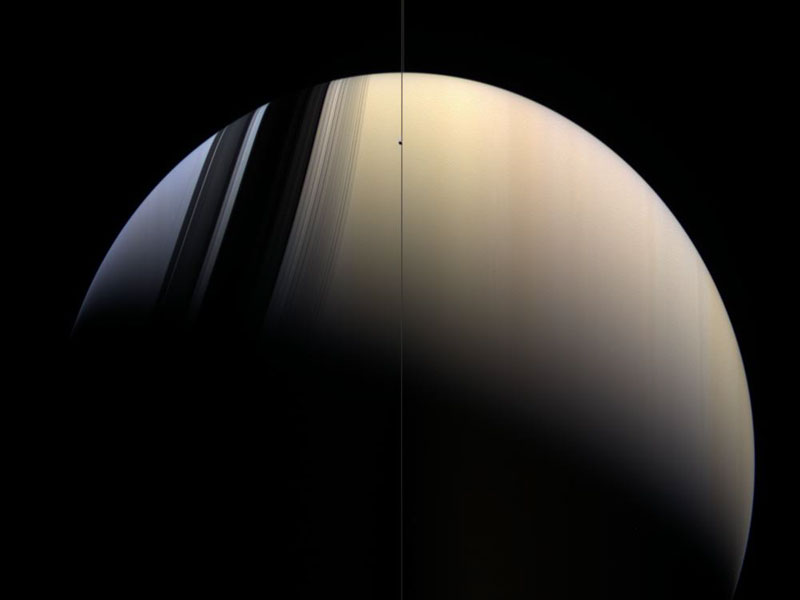Saturn in Blue and Gold

Explanation:
Why is Saturn partly blue?
The
above picture
of Saturn approximates what a
human
would see if hovering close to the giant ringed world.
The
above picture
was taken in mid-March by the robot
Cassini spacecraft now orbiting
Saturn.
Here
Saturn's majestic rings appear directly only as a thin vertical line.
The rings show their complex structure in the dark shadows they create on the image
left.
Saturn's fountain moon
Enceladus,
only about 500 kilometers across, is seen as the bump in the plane of the rings.
The northern hemisphere of
Saturn can appear partly blue for the same reason that
Earth's skies can appear blue -- molecules in the cloudless portions
of both planet's atmospheres are better at scattering blue light than red.
When looking deep into
Saturn's clouds, however, the natural
gold hue of Saturn's clouds becomes dominant.
It is not known why
southern Saturn does not show the same blue hue --
one hypothesis holds that clouds are higher there.
It is also
not known why Saturn's
clouds are colored gold.
Authors & editors:
Robert Nemiroff
(MTU) &
Jerry Bonnell
(USRA)
NASA Web Site Statements, Warnings,
and Disclaimers
NASA Official: Jay Norris.
Specific
rights apply.
A service of:
LHEA at
NASA /
GSFC
& Michigan Tech. U.

